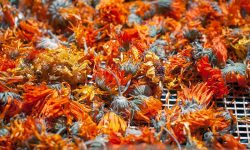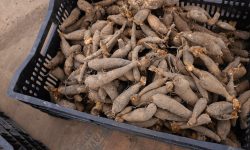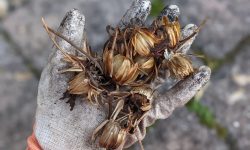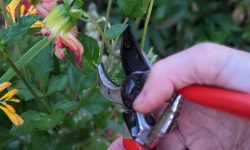Astilbe is a perennial favorite for gardeners who want both beauty and resilience. Known for its feathery plumes in shades of pink, white, red, and purple, it thrives in shady spaces where many flowers fail. Its unique texture and graceful blooms bring elegance to borders, woodland gardens, and containers. But the real question for gardeners planning their landscapes is: when do astilbe bloom?
The answer is exciting because astilbe varieties bloom at different times, from late spring through midsummer and even into late summer. By mixing early, mid, and late-season types, you can enjoy a long-lasting wave of color. Understanding bloom timing not only ensures a stunning display but also helps with care, pruning, and fertilizing. With the right choices, your garden will glow with astilbe’s charm all summer.
Understanding Astilbe Blooming Seasons
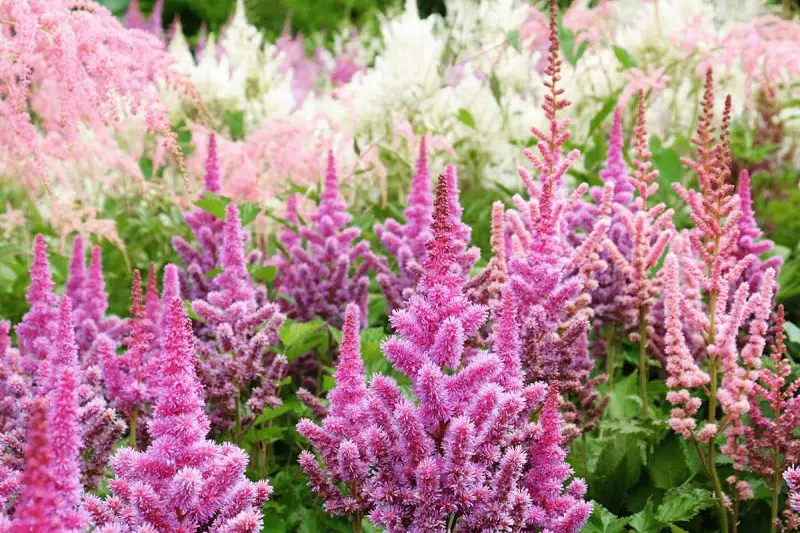
Astilbe is admired not only for its feathery plumes but also for the way its bloom seasons vary across different varieties. Some cultivars start to flower in late spring, bringing early bursts of color to shaded borders. Others reach their peak in midsummer, filling gardens with dense clouds of pink, red, purple, or white. A few varieties even extend the blooming period into late summer, ensuring that your landscape never lacks interest. This staggering of bloom times is what makes astilbe especially valuable for gardeners who want color progression across the season rather than a single, short display.
The timing of blooms is strongly influenced by both genetics and growing conditions. While the variety determines its natural flowering window, environmental factors like temperature, sunlight, soil quality, and water availability all affect the exact timing. In cooler regions, astilbe often blooms later compared to the same variety in a warmer climate. Soil that is rich in organic matter and retains steady moisture without becoming waterlogged supports healthier plants that bloom more fully. Providing the right conditions can extend the flowering season and keep the plumes fresh for longer.
By understanding the seasonal blooming patterns of astilbe, gardeners can design landscapes that maintain interest from spring through late summer. Planting a mix of early, mid, and late bloomers ensures continuous waves of color in shaded beds, woodland gardens, and along pathways. Pairing astilbe with complementary perennials such as hostas or ferns enhances the visual effect while keeping the garden cohesive. More importantly, knowing the bloom schedule helps with planning tasks like fertilizing, pruning, and dividing clumps at the right time. With this knowledge, your garden will not only look beautiful but also remain healthy and well-maintained year after year.
Factors That Influence Astilbe Bloom Time
Variety Selection
The variety of astilbe you select plays the largest role in determining when its blooms will appear. Early-season types often flower in late spring, offering the first plumes of color when many shade gardens still look subdued. Mid-season varieties usually reach their peak in June or July, creating a dramatic display of pinks, purples, whites, and reds. Late-season cultivars hold their flowers into August, extending color into the warmest part of the year. By planting a thoughtful mix of these varieties, gardeners can enjoy a rolling wave of blooms that stretch across the entire summer season.
Beyond bloom timing, varieties differ in height, flower shape, and foliage color, making them versatile for design purposes. Some have bronze or deep green leaves that contrast beautifully with lighter flowers. Early bloomers often stay more compact, while mid- and late-season types may grow taller and provide more dramatic vertical interest. Gardeners in colder climates may prefer early varieties to guarantee flowering before frost, while those in warmer areas can take advantage of later cultivars. Choosing the right combination ensures not only extended bloom time but also a balanced, visually appealing landscape.
Climate Conditions
The climate where astilbe is planted has a major impact on bloom time. In northern regions with cooler springs, plants may not bloom until the soil warms consistently, sometimes several weeks later than in southern gardens. Warmer climates encourage earlier flowering, often bringing blooms ahead of schedule. The length of the growing season also influences the display, as shorter summers may reduce the duration of flowering. Seasonal patterns like late frosts or unseasonal heat waves can disrupt expected bloom times as well.
Moisture and humidity further shape the flowering cycle. Astilbe prefers consistent soil moisture, and extended drought can stress the plant, causing fewer or shorter-lasting blooms. On the other hand, too much heat without shade may cause flowers to fade more quickly. Microclimates within your yard also matter. Plants grown near ponds or shaded by trees may bloom differently from those in drier or sunnier spots. Understanding how climate affects your plants allows you to anticipate shifts in bloom timing and take steps to support healthier, longer-lasting flowers.
Soil Quality
Soil quality has a powerful influence on when astilbe will bloom and how long the flowers last. These perennials grow best in soil rich in organic matter that retains moisture while draining well. Heavy clay soils often compact and suffocate roots, leading to delayed blooming and weaker plumes. Sandy soils, on the other hand, lose water too quickly and can cause stress that shortens the bloom cycle. Amending the soil with compost, leaf mold, or aged manure before planting helps create the ideal structure. With fertile, moisture-retentive soil, astilbe develops strong roots that fuel consistent growth and timely flowering throughout the season.
Soil pH also plays an important role in bloom success. Astilbe generally prefers slightly acidic to neutral soil with a pH between 6.0 and 7.0. In alkaline soil, the plant struggles to absorb nutrients such as iron and phosphorus, resulting in poor growth and reduced bloom production. Gardeners should test soil periodically and add amendments like sulfur, peat moss, or organic mulches to improve conditions. Regular top-dressing with compost not only enriches the soil but also maintains its structure over time. By providing soil that is nutrient-rich, balanced, and well-prepared, gardeners can ensure that astilbe bloom on schedule with maximum vibrancy.
Watering Practices
Watering practices directly impact the bloom cycle of astilbe. These plants need consistent soil moisture to thrive, especially during the weeks leading up to and throughout their flowering season. Without enough water, the plant becomes stressed, resulting in delayed blooms or flowers that fade prematurely. Deep watering encourages roots to grow downward, creating a stable system that can access moisture during dry spells. Shallow watering, by contrast, keeps roots close to the surface, making the plant more vulnerable to drought and reducing flower production.
Too much water, however, can be just as harmful. Astilbe dislikes waterlogged soil because excess moisture deprives the roots of oxygen and increases the risk of rot. The key is balance: soil should remain evenly moist but never soggy. Adding mulch around the base of the plant helps regulate soil temperature and retain water, creating ideal conditions during hot summer days. Gardeners who monitor rainfall and supplement with irrigation during dry periods will notice stronger plants and more reliable bloom timing. Proper watering not only ensures that flowers arrive as expected but also extends their beauty well into summer.
Regional Blooming Differences Across the U.S.
Northern States
In northern states, astilbe usually blooms later due to the slower warming of soil in spring. Many early varieties that might flower in May elsewhere will not open until June or even early July. The cooler temperatures, however, help prolong the blooming season once it begins. Flowers often stay vibrant for weeks because they are less stressed by heat. Gardeners in these regions can enjoy a longer display even though the season starts a little late.
Moisture levels also play a role in northern climates. Many of these regions receive regular rainfall, which supports astilbe’s preference for consistently damp soil. When combined with cooler summer temperatures, this creates excellent growing conditions for extended bloom. However, gardeners must be mindful of sudden cold snaps in spring or early frosts in fall. Selecting early-blooming varieties helps ensure that astilbe has enough time to flower fully before the growing season ends.
Southern States
In the southern states, astilbe tends to bloom earlier, often beginning in late spring when temperatures rise quickly. While the flowering season starts sooner, blooms may not last as long because of intense summer heat. Flowers can fade more quickly if plants are exposed to direct afternoon sun. To counter this, gardeners often plant astilbe in shaded or partially shaded areas. This protection helps the plants stay cool and supports more extended blooms.
Moisture management is especially important in the south. Hot weather and occasional drought conditions can dry out soil rapidly, stressing astilbe and reducing bloom quality. Applying mulch and providing regular irrigation helps maintain consistent soil moisture. Choosing heat-tolerant varieties or later bloomers can also extend flowering in these regions. With thoughtful placement and attentive care, southern gardeners can still enjoy vibrant displays of astilbe despite the challenges of high temperatures.
Astilbe Bloom in Warm Climates
In warm climates, astilbe tends to bloom earlier compared to regions with cooler temperatures. The absence of late frosts and the steady rise in warmth allow the plants to begin developing buds more quickly, often resulting in flowers as early as late spring. With proper care, these blooms can last into mid-summer, creating weeks of vibrant color in the garden. However, the intensity of summer heat can sometimes shorten the flowering period, especially if plants are exposed to harsh afternoon sun. Consistent watering and mulching around the base of the plants can help retain soil moisture, which is crucial for extending the bloom.
To ensure lasting beauty, gardeners in warm regions should select a planting site that offers morning sunlight and partial shade during the hottest hours of the day. This positioning prevents flower scorch and supports healthier foliage. Choosing late-blooming astilbe varieties can also stretch the flowering season further. When given the right conditions, astilbe in warm climates can maintain their fluffy, colorful plumes for several weeks, providing a lush, elegant look that stands out in summer landscapes.
Astilbe Bloom in Cooler Climates
In cooler climates, astilbe usually blooms later than in warmer regions, but the flowers tend to last longer once they appear. Because spring temperatures rise more gradually, astilbe plants take additional time to form buds and leaves, typically leading to blooms in early or mid-summer. In some cases, if the weather remains mild and moisture is abundant, the flowering season can extend into late summer. The cooler air also helps the blossoms maintain their vivid colors, preventing them from fading too quickly under intense sunlight.
One of the greatest advantages of growing astilbe in cooler climates is the prolonged enjoyment of both the flowers and the foliage. The leaves stay lush and green, complementing the plumes and enhancing the overall garden display. Gardeners can maximize this effect by planting a mix of early-, mid-, and late-blooming varieties, ensuring continuous waves of color throughout the season. With minimal stress from extreme heat, astilbe thrives in these conditions, making them an ideal choice for gardens in cooler regions where long-lasting summer beauty is highly valued.
Astilbe Bloom in Shady Gardens
Astilbe thrives in shady gardens, making it one of the most reliable perennials for low-light areas. In full or partial shade, the plant develops lush foliage and produces its characteristic feathery plumes without the stress caused by intense sunlight. Blooming in shady spots may occur slightly later than in sun-exposed areas, as cooler soil and reduced light slow down bud development. However, the flowers are often longer-lasting and more vibrant, creating a stunning contrast against dark green leaves. Gardeners can take advantage of shaded areas near trees, fences, or buildings to showcase astilbe while keeping the blooms healthy.
Maintaining consistent moisture is especially important in shady gardens, as the soil may retain dampness longer than sunny spots. Mulching helps regulate soil temperature and prevents water loss while protecting roots from sudden temperature fluctuations. Shaded conditions also reduce the risk of flower scorch and leaf wilting, allowing blooms to maintain their color and structure for weeks. By carefully selecting varieties suited for shade and providing adequate moisture, gardeners can enjoy extended flowering periods, turning shaded garden beds into a lively display of elegant color and texture.
Astilbe Bloom in Sunny Gardens
While astilbe prefers partial shade, it can also thrive in sunny gardens if properly cared for. In full sun, the plants often bloom earlier than in shaded areas, taking advantage of warmer soil and increased light. However, strong afternoon sunlight can stress the plant, causing blooms to fade faster and leaves to wilt. Gardeners can extend the flowering period by providing morning sun and afternoon shade, ensuring that the delicate plumes receive enough light without overheating. Selecting heat-tolerant varieties can also improve performance in sun-exposed gardens.
Consistent watering is critical for sunny locations, as soil dries quickly under direct sunlight. Mulching around the base of the plants helps retain moisture and protects roots from temperature extremes. Fertilizing with a balanced, slow-release fertilizer supports healthy growth and abundant blooms. By monitoring sun exposure and maintaining soil moisture, gardeners can enjoy vibrant astilbe flowers even in sunny spots. With proper care, sun-grown astilbe produces tall, colorful plumes that brighten borders, pathways, and mixed perennial beds, providing long-lasting summer beauty.
Caring for Astilbe Before and After Blooming
Proper care before blooming is essential for astilbe to produce full, vibrant plumes. In early spring, gardeners should remove winter debris and any old or damaged foliage. This cleanup allows the plant to direct energy toward new growth and upcoming blooms rather than sustaining dead leaves. Adding a layer of organic mulch at this stage helps retain soil moisture, regulate temperature, and suppress weeds. Regular watering is vital, as astilbe thrives in consistently damp soil. Water stress can delay bud formation or cause weaker flowers, while overwatering may lead to root rot and reduce overall plant vigor. Early fertilization with a balanced, slow-release fertilizer also promotes strong, healthy shoots that will support abundant blooms.
During the blooming period, careful management of water and light becomes even more critical. In shaded gardens, the soil often retains moisture longer, so gardeners must avoid overwatering. In sunnier locations, more frequent irrigation is required to prevent drying, which can shorten bloom longevity. Fertilizer applied at this stage enhances flower production and improves color intensity. Observing plants for early signs of stress, such as drooping flowers or yellowing leaves, allows timely adjustments to care routines. Proper staking of taller varieties can also prevent plumes from bending or breaking under their weight.
After blooming, post-flowering care ensures astilbe remains healthy and ready for the next season. Deadheading spent flowers encourages energy to return to the foliage and root system. Dividing older, crowded clumps every few years improves airflow and reduces disease risk. Maintaining mulch and consistent moisture throughout summer and fall strengthens roots and supports overall plant health. By providing attentive care before, during, and after blooming, gardeners can enjoy longer-lasting, colorful, and healthy astilbe displays year after year.
Common Problems That Affect Astilbe Bloom
Insufficient Moisture
Astilbe requires consistently moist soil to thrive, and insufficient water is one of the most common problems affecting blooms. Prolonged drought or irregular watering can stress the plant, resulting in delayed flowering or reduced plume size. When soil dries out, buds may fail to develop, and leaves can turn yellow or wilt, making the plant look unhealthy. Gardeners should water deeply and regularly, especially during the weeks leading up to and during the flowering season, to maintain a steady moisture level that supports vigorous growth and abundant blooms.
Mulching around the base of astilbe is an effective way to retain soil moisture and prevent rapid evaporation. Organic mulches, such as shredded leaves or compost, also help regulate soil temperature, reducing stress on the roots. In warmer climates, this practice is particularly important as it shields the plant from intense sun and heat. By maintaining proper hydration and using mulch strategically, gardeners can ensure that astilbe produces strong, vibrant plumes throughout the blooming season, keeping the garden colorful and healthy.
Inadequate Light
Light conditions play a significant role in the flowering of astilbe. While the plant tolerates partial shade, too much deep shade can reduce the number and size of blooms. In dense shade, astilbe may produce fewer plumes and weaker colors, as it struggles to photosynthesize enough energy to support flowers. On the other hand, excessive direct sun, especially during hot summer afternoons, can cause flowers and leaves to wilt or fade prematurely. Choosing a planting site with balanced morning sun and afternoon shade helps optimize bloom quality.
Adjusting garden conditions can prevent many light-related problems. For plants in too much shade, selective pruning of surrounding trees or shrubs can increase light availability. In sunnier locations, providing partial shade with garden structures or companion plants can protect astilbe from heat stress. Observing how sunlight affects the plants allows gardeners to make timely adjustments, ensuring that blooms remain vibrant and long-lasting. Proper light management supports both flower development and overall plant health, making it a key factor in successful astilbe cultivation.
Pests and Diseases
Pests and diseases can significantly impact astilbe blooms if not managed properly. Common pests include aphids, spider mites, and slugs, all of which can damage leaves and flowers, reducing the plant’s ability to produce vibrant plumes. Aphids and mites feed on sap, causing leaves to yellow and curl, while slugs may chew on young shoots. Fungal diseases, such as powdery mildew and leaf spot, also threaten bloom quality by weakening foliage and sometimes causing premature bud drop. Early detection and timely intervention are crucial to prevent these problems from spreading and affecting flowering.
Preventive measures include maintaining proper plant spacing to improve airflow, removing infected leaves, and using organic or chemical treatments when necessary. Encouraging natural predators like ladybugs can help control aphid populations. Regular garden maintenance, including cleaning up debris and monitoring plant health, reduces the risk of infestations and infections. By managing pests and diseases effectively, gardeners can protect both foliage and blooms, ensuring that astilbe produces healthy, abundant flowers throughout the season.
Soil Issues
Soil quality and structure play a critical role in astilbe bloom success. Poorly drained soils, compacted clay, or nutrient-deficient substrates can delay flowering, reduce plume size, or even cause plant decline. Astilbe thrives in rich, well-drained soil that retains moisture without becoming waterlogged. Adding organic matter, such as compost or leaf mold, improves soil texture, fertility, and aeration, supporting root growth and flower development. Nutrient-poor soils may require regular fertilization to provide essential elements that promote healthy plumes and vibrant foliage.
Soil pH is another factor that affects blooming. Astilbe prefers slightly acidic to neutral soil, typically between 6.0 and 7.0. Alkaline conditions can hinder nutrient absorption, causing weaker growth and fewer flowers. Gardeners can amend soil with peat moss, sulfur, or other organic materials to correct pH imbalances. Maintaining proper moisture, fertility, and pH ensures that roots can absorb nutrients efficiently, supporting strong, timely blooms. Healthy soil is foundational for astilbe to thrive and display long-lasting, colorful plumes.
Tips for Extending the Bloom Period of Astilbe
Extending the bloom period of astilbe starts with proper site selection. Choosing a location with partial shade protects the plant from intense midday sun, which can cause flowers to fade prematurely. In addition, selecting varieties with staggered bloom times allows gardeners to enjoy continuous color throughout the summer. Planting a mix of early-, mid-, and late-blooming cultivars ensures that when one variety fades, another begins to flower, providing an extended visual display. Correct spacing between plants also improves airflow, reduces disease risk, and supports longer-lasting blooms.
Consistent care during the flowering season is equally important. Regular watering ensures that soil remains moist but not waterlogged, which supports both flower longevity and healthy foliage. Applying a balanced, slow-release fertilizer at the start of the blooming period promotes sustained growth and more vigorous plumes. Deadheading spent flowers encourages the plant to redirect energy to remaining buds, prolonging the flowering season. Observing plants daily allows gardeners to identify stress signs early and take corrective action to prevent premature flower decline.
Post-bloom maintenance also contributes to future extended blooms. After flowering, cutting back dead or faded flower stalks while leaving healthy foliage encourages strong root and leaf growth for the following season. Mulching around the base helps conserve moisture and maintain soil health. Dividing overcrowded clumps every few years not only rejuvenates the plant but also encourages more abundant flowering. By combining thoughtful variety selection, attentive care, and strategic maintenance, gardeners can significantly extend astilbe’s bloom period and enjoy a vibrant, colorful display all summer long.
Propagation Tips to Ensure Healthy Future Blooms
Proper propagation is essential for maintaining healthy astilbe plants and ensuring abundant future blooms. Dividing established clumps every three to four years rejuvenates older plants and encourages vigorous growth. The best time to divide is in early spring before new growth emerges or in late summer after flowering. Carefully dig up the plant, separating the root clumps with a sharp, clean tool, and replant them in well-prepared soil with ample organic matter. This method not only promotes healthy roots but also allows gardeners to increase their collection while ensuring each plant produces strong flowers.
Propagation through root cuttings or offsets is another effective strategy. Select healthy, disease-free portions of the root system and plant them in moist, fertile soil. Maintaining consistent moisture and partial shade helps the new plants establish quickly, supporting strong growth for the next blooming season. Using this method, gardeners can experiment with different varieties while preserving the original plant’s characteristics, ensuring that flowers remain vibrant and abundant year after year.
Seed propagation is less common but can also produce healthy plants if handled correctly. Collect seeds from mature plumes and sow them in well-draining soil indoors or in a controlled environment. Keep the soil evenly moist and provide indirect light until seedlings are strong enough to transplant outdoors. Although this method takes longer, it allows gardeners to expand their astilbe collection and introduce genetic diversity. By following these propagation tips, gardeners can secure long-term health and consistent, spectacular blooms from their astilbe plants.
Seasonal Care to Maximize Astilbe Bloom
Proper seasonal care ensures that astilbe produces vibrant blooms year after year. In early spring, gardeners should remove any remaining winter debris and old foliage. This cleanup promotes healthy new growth and prepares the plant for optimal flowering. Applying a layer of organic mulch at this stage helps retain moisture, regulate soil temperature, and suppress weeds, creating the ideal environment for strong root development. Consistent watering during this period also supports early bud formation and prevents stress that could delay blooming.
During the summer, maintaining soil moisture and protecting plants from extreme conditions is crucial. Astilbe prefers consistently damp soil but can suffer from root rot if overwatered. Mulching helps conserve moisture and keep roots cool, while light fertilization encourages larger and more colorful blooms. Observing plants daily allows gardeners to address any signs of stress, such as wilting, yellowing leaves, or fading flowers. Removing spent flowers encourages the plant to direct energy toward remaining buds, prolonging the flowering period.
As the growing season ends, fall care prepares astilbe for the next year. After blooms fade, gardeners can trim back flower stalks while leaving healthy foliage intact. This promotes root strength and ensures that the plant has sufficient energy reserves for winter. Maintaining mulch during colder months helps protect roots from temperature fluctuations. In regions with harsh winters, covering plants with a layer of organic material provides additional insulation. By following seasonal care routines throughout the year, gardeners can maximize bloom potential and enjoy long-lasting, colorful displays of astilbe in their gardens.
Fertilization Strategies for Optimal Astilbe Bloom
Fertilization plays a crucial role in supporting healthy growth and vibrant blooms in astilbe. Applying a balanced, slow-release fertilizer in early spring provides essential nutrients for root development and strong shoots. This initial feeding ensures that plants have sufficient energy to produce plump, colorful flower plumes. Gardeners should choose fertilizers with a balanced N-P-K ratio, as both nitrogen for foliage growth and phosphorus for flower formation are necessary for optimal performance. Properly timed fertilization enhances overall plant vigor and bloom quality throughout the flowering season.
During the blooming period, supplemental feeding can help sustain flower production. A light application of water-soluble fertilizer every few weeks supports ongoing growth without overloading the plant. Overfertilization should be avoided, as excessive nitrogen can promote leaf growth at the expense of flower development. Gardeners should also monitor plant response, adjusting feeding frequency and dosage as needed. Combining fertilization with consistent watering and mulching creates ideal conditions for astilbe to reach its peak flowering potential.
After flowering, a final fertilization can aid in root and foliage development in preparation for the next season. Applying compost or organic fertilizers helps replenish soil nutrients naturally, supporting long-term health. Proper fertilization strategies, combined with attentive care and seasonal maintenance, ensure that astilbe remains robust and capable of producing abundant, long-lasting blooms year after year. With the right nutrient management, gardeners can enjoy vibrant color and healthy plants across multiple seasons.
FAQ About When Astilbe Bloom
What is the best time to plant astilbe for optimal blooms?
The ideal time to plant astilbe is in early spring or fall when temperatures are mild. This allows roots to establish before the growing season. Well-prepared soil with organic matter ensures strong growth. Adequate moisture and partial shade help new plants develop healthy foliage and produce vibrant blooms in their first season.
How often should I water astilbe during the growing season?
Astilbe prefers consistently damp soil. Water deeply at least once or twice a week, more frequently during hot, dry periods. Mulching helps retain moisture and prevent soil from drying out. Regular watering ensures that flower buds develop properly and that the plant remains lush, promoting long-lasting, healthy blooms throughout the season.
Can astilbe bloom in full sun, or does it require shade?
Astilbe can bloom in full sun if soil moisture is consistently maintained. However, partial shade is ideal, protecting flowers and foliage from intense afternoon heat. Too much shade may reduce the number and size of blooms. Selecting suitable varieties and monitoring sunlight exposure ensures vibrant, long-lasting flowering.
How do I prevent pests and diseases from affecting blooms?
Maintain proper spacing and airflow between plants to reduce disease risk. Inspect regularly for pests like aphids or spider mites, and treat with organic or chemical solutions if needed. Removing dead or infected foliage prevents spread. Consistent watering and good garden hygiene help maintain plant health and protect blooms.
What is the best method to propagate astilbe for future blooms?
Astilbe can be propagated through division, offsets, or seeds. Division in early spring or late summer rejuvenates older plants. Root cuttings establish quickly in moist, fertile soil. Seed propagation is slower but allows for genetic variety. Proper propagation ensures strong plants capable of producing abundant, vibrant blooms in subsequent seasons.
Conclusion
Astilbe is a versatile perennial that adds vibrant color and texture to any garden. By understanding bloom timing, providing proper seasonal care, and addressing common problems, gardeners can enjoy long-lasting, healthy flowers. Consistent watering, balanced fertilization, and attention to light conditions maximize bloom potential. Propagation through division or root cuttings ensures future displays of lush foliage and plumes. Selecting suitable varieties and practicing preventive care against pests and diseases further enhances flowering success. With thoughtful care and planning, astilbe transforms garden spaces, delivering stunning summer color and a reliable, beautiful perennial display year after year.


